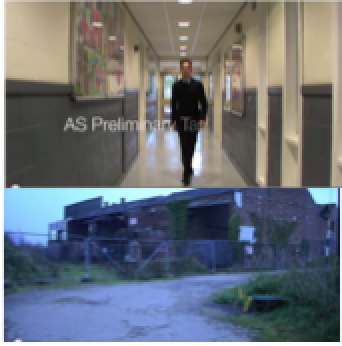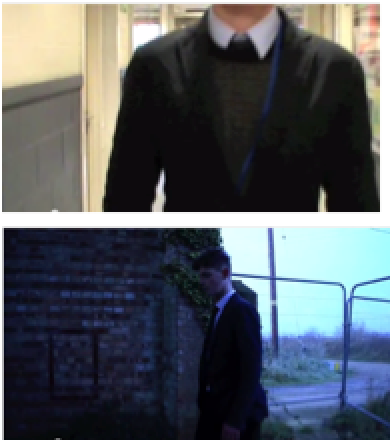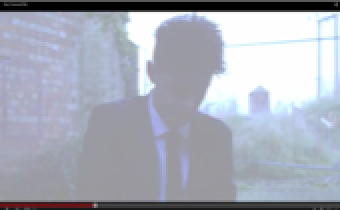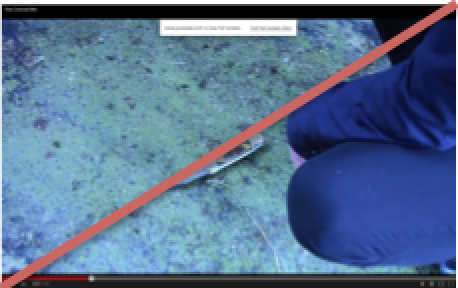Saturday, 13 June 2015
Conventions of a Music Promo
Camerawork:
Main shots used present the whole band;
usually long shots, this brings emphasis to them. Making them the main focus.
Close ups are also regularly used to gain the feel of closeness to the
performer, just as most people wish to be in the front row of their favorite
performer. Low angles are used to
present the performer as an idol, to gain a sense of them being on stage.
Overall there is a very dynamic use of shots, to make the music video more
intriguing.
Editing:
There is almost always a link between editing
with the tempo of the song. Quite often, there is use of straight cuts on the
beat. Most shots are focused on the performer, making them more significant.
Cross cutting is used between the performance and narrative, usually integrated
but there may be cases where one may be dominant than the other. Montages are often used in music promos to
give a symbolic meaning, often cut between them very quickly.
Mise
en scene
Mise en scene reflects the mood of the song
and the lyrics. They are affected by genre. Settings vary to add interest.
Instruments are also presented, to bring authenticity. Costumes link to genre
but also link to fashion trends, making fans to follow their trend. Lighting
creates the mood and atmosphere; often you get high key lighting.
Narrative
and performance:
Narrative and performance is interwoven.
The performance is added to the music video to create the same atmosphere to
that if the audience was at a gig. You visually can see the band playing. Narrative
relates to the lyrics. There is the interpretation of lyrics through visuals.
Some narratives may ignore lyrics and may be disjuncture, bringing attention
away from the song itself but bringing more interest to the visuals itself.
Music Promo - What is it?
-
What is a music promo?
A music promo is Promotion of a song and
the artist, either for an album or a single soundtrack. It is an advert of the
band, including a song accompanied with visual representations. A narrative is
presented as the band preform, most likely miming in a made up set.
-
Why do bands/ record companies
make them? (Purpose)
A promo is to improve sales and increase
publicity. The promo is usually in a video format to bring entertainment and
forms a connection between the song and video. Overall it relates to brand
identity, informing the audience with such information such as their genre.
With the visuals, it increases memorability of the artist. By making the video
promo unique, the higher likeliness that wider audiences will remember the
artist, persuading them to buy it, therefore increasing sales. For an example Blur's music promo for their song 'Parklife' was very unusual, which in turn made it very popular.
- Where are they exhibited?
Some music promos are exhibited on music
channels, a traditional form of promotion.
A lot of bands, artists were promoted on ‘Top of the Pops’ and in TV
channels specialized for music such as MTV. The use of traditional exhibition
provides access to large audiences, allowing the increase in appeal.
There are also new media forms of
promotion. Where artists directly use forms of social media and the Internet.
YouTube and ITunes are an example of new media promotion, where it includes
easy access to downloads but also makes it easier for bands/artists to upload
content in areas such as Facebook and Twitter, where there is a large audience
to attract. Also uploading to YouTube is free, and so highly benefits the
artists/bands in profits.
Thursday, 29 January 2015
Q5: (Commentary) How did you attract /address your audience?
During research, I believe that we fulfilled our audience's expectations. Their feedback suggested that what makes a thriller interesting is how well edited the final piece is. From this feedback, we added graphic matches to better our final production as it made it flow continually. Also realism is a key factor, so we did not exaggerate our scenes too much by keeping shots close and quick to also maintain it's quickness. Finally for the use of sound, our audience suggested the use of non diegetic sounds to keep them on edge and to keep tension flowing and so we used no dialogue. However we used a lot of incidental sounds to accompany events and reinforce the fast paced narrative.
Sunday, 25 January 2015
Q4: (Polls) Who would be the audience for your media product?
After asking a varied amount of people to view our production, we asked, using PollEverywhere on what age was suitable to viewing our production and overall we got a response of the age of '15-17' as being the most suitable with a total of 7 responses out of the 12 people we asked.
Saturday, 10 January 2015
Q7: (Glogster) Looking back at your preliminary task, what do you feel you have learnt in this progression from it to the full product? (Full screen)
During planning and research, we learnt a lot about the conventions of a thriller and how these allow the aid of tension and suspense found within. For research, we went thoroughly into: shot types and how they bring different meanings to the audience, the use of sound and how this may aid tension, editorial techniques and how thrillers should be kept at a fast rate to maintain tension and to keep the audience on the edge of their seats, also we learnt about mise en scene and what you would find in a typical thriller. All this including planning of what shots to use, where to film, what mise en scene we will integrate all helped in the process of making the production and emphasised it’s importance in thorough research and planning when it comes to the final product. We needed to know all this to alter the mood of the scene and project certain feelings towards the audience, in thrillers, we want the audience to feel on edge and also intrigued and to do this we had to research on how we can create this feeling.
 Looking at shot types helped a lot since our preliminary, from knowing little about how meaning can be generated, to having a well grounded knowledge of key conventions. We used a varied amount of shot types; we made use of an extreme long shot in which we did not effectively use in our preliminary, this helped in establishing the setting and emphasised it’s isolated area to add tension. (Top picture shows preliminary, and bottom is our final production) We did not make use of this shot in our preliminary and so location is unclear.
Looking at shot types helped a lot since our preliminary, from knowing little about how meaning can be generated, to having a well grounded knowledge of key conventions. We used a varied amount of shot types; we made use of an extreme long shot in which we did not effectively use in our preliminary, this helped in establishing the setting and emphasised it’s isolated area to add tension. (Top picture shows preliminary, and bottom is our final production) We did not make use of this shot in our preliminary and so location is unclear. We made clear use of extreme close up and close ups in our final production to bring tension and emphasize aspects in the scene such as the weapons; emphasizing it’s danger and making the audience feel the tension build, interesting them further to watch. This time round we used a panning shot instead of a tracking shot from our preliminary, we did this due to it was difficult to complete, without the shot shown being unstable. We have advanced from this and made sure that the shot was set up on a tripod, overall giving it a smoother flow. From the screenshot on the right of our preliminary, we tried doing a tracking shot handheld however, the shot was unsteady and it would have been much better if we kept Luke in the center of the frame to provide all attention to the character.
We made clear use of extreme close up and close ups in our final production to bring tension and emphasize aspects in the scene such as the weapons; emphasizing it’s danger and making the audience feel the tension build, interesting them further to watch. This time round we used a panning shot instead of a tracking shot from our preliminary, we did this due to it was difficult to complete, without the shot shown being unstable. We have advanced from this and made sure that the shot was set up on a tripod, overall giving it a smoother flow. From the screenshot on the right of our preliminary, we tried doing a tracking shot handheld however, the shot was unsteady and it would have been much better if we kept Luke in the center of the frame to provide all attention to the character. This time round, we used much more of a variety of transitions. We used flashbacks to cross cut between the present and past and provide a tension build, we also used crossfades and fades to white and black. We used these more effectively in our production than our preliminary, using it to provide a fast paced feel but also used transitions specifically to signify different things; fades to black to signify flashbacks (black was used instead of white to connote death), fades to white to signify the present and cross fades to signify time passing. We overall improved in our editing, with using straight cuts more effectively, to create a jagged effect to give distortions and to express an uneasy atmosphere.
This time round, we used much more of a variety of transitions. We used flashbacks to cross cut between the present and past and provide a tension build, we also used crossfades and fades to white and black. We used these more effectively in our production than our preliminary, using it to provide a fast paced feel but also used transitions specifically to signify different things; fades to black to signify flashbacks (black was used instead of white to connote death), fades to white to signify the present and cross fades to signify time passing. We overall improved in our editing, with using straight cuts more effectively, to create a jagged effect to give distortions and to express an uneasy atmosphere.We thought more about framing more in our production than when we were doing our preliminary. With the ‘Golden mean’, we used it in our production to attract attention to certain aspects in the scene; we used it for the knife to emphasize the weapon more effectively, to show it’s relation in the crime scene more significantly. In our preliminary however, we did not think much of the golden mean, as you can see some shots are distorted. With the rule of thirds, again, we thought about this more in our production with some scenes such as that when the innocent victim is being killed; we used this to attract more attention to the areas such as the rope. I also believe that we have improved in our continuity as a whole, in our preliminary, when Luke opens the door, the match on action is not used that effectively, however we have advanced in this when the Detective is walking through the crime scene; it flows more smoothly.
Subscribe to:
Comments (Atom)





